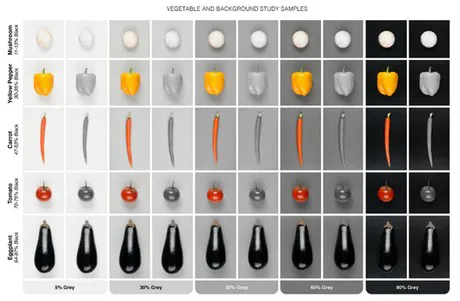The background colour of vegetables affects the level of appeal consumers ascribe to it, according to research from Brigham Young University in Utah and the Delft University of Technology in the Netherlands. It turns out consumers consider vegetables with a black background to be more appealing.

Scientists experimented with various background colours in the vegetable department of a supermarket. For the experiment, 46 participants assessed a total of five varieties of vegetables: mushroom, yellow bell pepper, carrot, tomato and aubergine. The vegetable varieties were displayed against five different shades of grey, varying in darkness. It was earlier established that cool, warm, orange and blue coloured backgrounds aren’t ideal.
The results of the research show that consumers considered vegetables with a 90% black background as more appealing and expensive than products with a lighter background. Particularly carrots with a black background were appreciated to a relatively high degree. Scientists urge retailers to use this result to improve the performance of the vegetables.
Colour can therefore play an important part in the sales of fruit and vegetables. The Ga voor Kleur Lab (link to Dutch website) earlier researched which adjustments could improve the fruit and vegetable sales in supermarkets. The results of the Ga voor Kleur Lab were recently discussed in Dutch BNR radio show Wetenschap Vandaag. Click here to listen to this Dutch interview.
Source: NAGF
